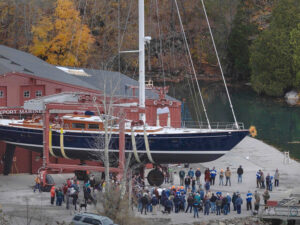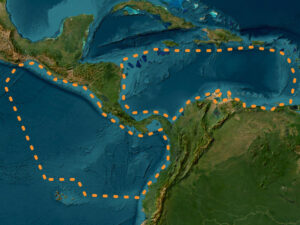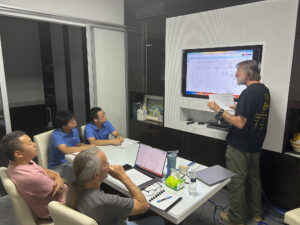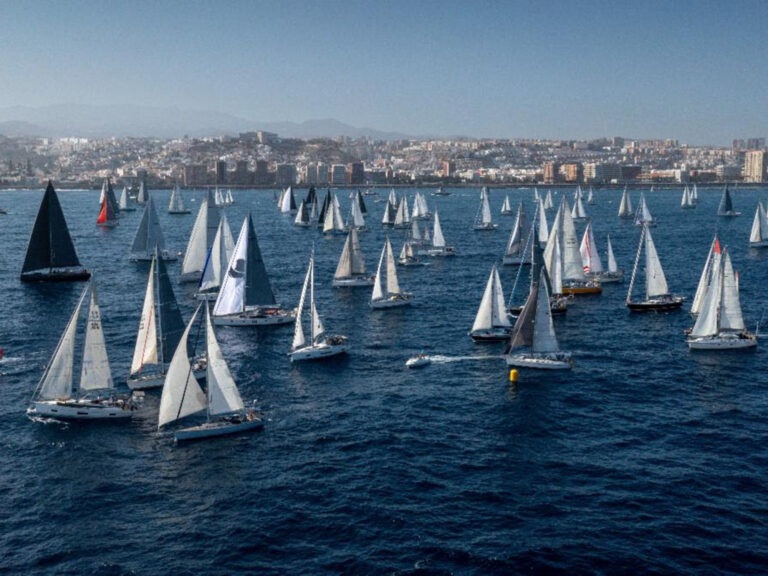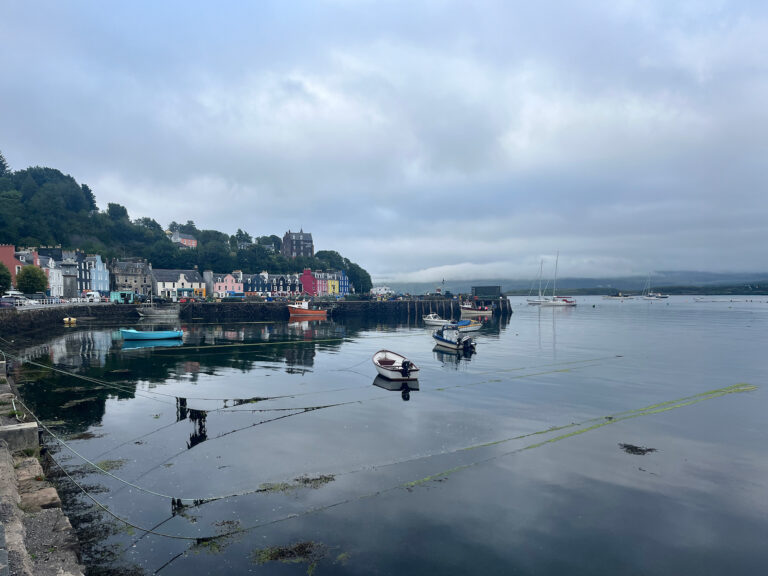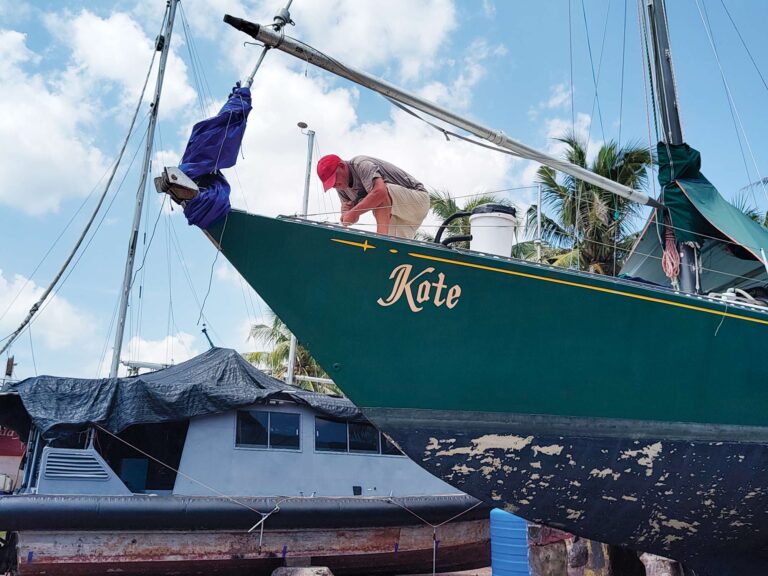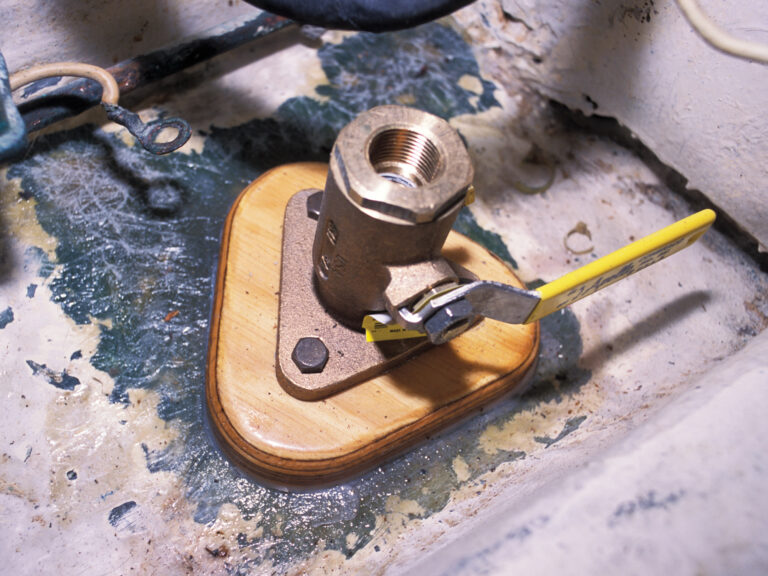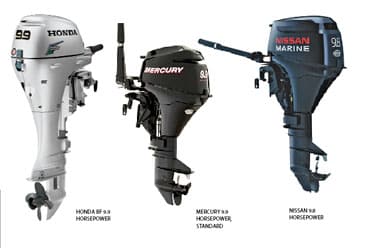
four stroke engines
It’s been 14 years since I did my first article covering outboard engines for Cruising World, and a lot has happened since regarding your options for a low-horsepower motor for your tender or small sailboat.
Johnson and Evinrude have pretty much given up on the smaller engines, and as a result, neither brand is represented in this year’s roundup. And while we do take a look at seven other brands this year, it’s interesting to note that of those, five are made by the same company, and about the only difference between them is the paint job and minor variations in price and the availability of engines and parts, depending upon where you’re located.
Take note: We don’t have a single two-stroke engine in our roundup this year. I think that may be a first. Such engines are still available, but only on a limited basis outside the United States. Environmental Protection Agency emission mandates have effectively driven the two-stroke outboard out of the marketplace, although Evinrude has done extremely well with its larger E-Tec two-stroke line.
This year also marks the first time that we’ve ever felt the need to discuss an electric outboard. Torqeedo is rapidly gaining ground here in the United States, and I have to say, I love the products. This is high-quality, well-engineered equipment—but still at a premium price, I’m afraid. We’ll talk about the value a bit later.
I should also point out that all of the manufacturers represented here offer a range of engine sizes to suit your specific needs, so for that reason, we’ll begin with a bit of background to help you determine what’s best for your boat. That knowledge will help you later on when you actually get down to selecting the engine and brand of your choice.
Our roundup this year includes engines from Honda, Mercury, Nissan, Suzuki, Tohatsu, and Yamaha as well as one electric motor from Torqeedo.
Determine Your Needs
Choosing the proper horsepower has proven to be one of the fundamental decisions to be made over the years, but now with the advent of electric propulsion, we actually see thrust specifications thrown into the mix. For our comparison, we selected engines (and the Torqeedo motor) that are close to either a rating of 9.9 horsepower or, in the case of the Torqeedo, its approximated equivalent based on motor thrust. These are all motors you might expect to find on a typical inflatable used by a cruising sailor. To meet your specific needs, you’ll have to decide on how much power you want, and that’s determined at least in part by limitations based on the size of the dinghy or small boat on which the motor will be mounted.
With that in mind, it’s important to think about exactly what you’ll be doing with the motor. For example, there are many pocket cruising sailboats that run on outboard-engine power, and lots of day sailors want a kicker for when the wind drops to zero. But the question to ask is whether or not you need to have electric start and an alternator to help recharge any onboard batteries. With the exception of the Torqeedo, all of the engines we examined have both electric start and charging capability available at the 9.9-horsepower level. Some 6-horsepower or other smaller engines may have these, too; others may not, so if you have a smaller boat and you want only a 6-horsepower engine but would really like to have the ability to recharge your onboard battery, your choices will be narrowed down. Of course, if you have access to a shore-power battery charger and you’re not planning to spend nights away from the dock, charging capability isn’t really needed.
Next, ask yourself if, while passagemaking, you’re going to need to remove the engine from the dinghy and store it on your larger cruiser. I’d say that the answer, in most cases, is likely to be yes, which means that weight will be a concern. This is a distinct downside to our evolution into four-stroke technology, since they’re considerably heavier than their two-stroke counterparts. Our 9.9-horsepower collection averages 86.2 pounds in weight; that’s a lot for the average person to manhandle without some assistance. Even stepping down to a 4-horse four-stroke doesn’t offer much relief; these all weigh in somewhere between 55 and 60 pounds. If weight is your primary consideration, the Torqeedo could be a real option, since it tips the scales at 38 pounds. Torqeedo also makes a really small Travel motor that has the approximate power of a 3-horsepower engine; it weighs a mere 30 pounds, and that includes the weight of its lithium-ion battery.
Another area of concern is how an engine fits on the boat you’re trying to propel, with transom height the key issue. Traditionally, companies offered two shaft lengths, a short and a long, measuring 15 inches and 25 inches, respectively. Now we’re seeing manufacturers offering three shaft-length options. “Small Outboards at a Glance,” the chart on page 105, shows that some of the models we examined now come in a third, 20-inch shaft length, although not those from Mercury and Yamaha. Torqeedo’s two shaft lengths are unusual, measuring 25 and 30 inches. Shaft length significantly affects how well an individual motor fits on a particular boat.
Finally, there’s the question of fuel. Smaller engines have an integral fuel tank; others don’t. This may be a concern from the perspectives of both space and weight management. It sure is nice not to have to deal with auxiliary fuel tanks, hoses, and primer bulbs all the time, but depending upon your needs, you may have no choice in the matter. And for those who plan on longer spells of motoring, the extended range of a larger fuel tank means that you don’t have to carry a spare jug and can skip refueling while under way.
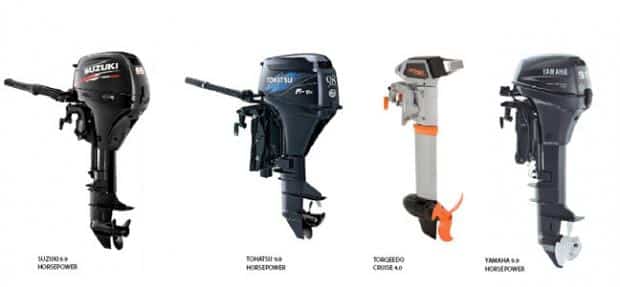
Service and Warranty
In terms of warranty, Honda wins with its five-year program. Mercury offers a three-year basic warranty with an additional three-year limited corrosion warranty. The other engine makers offer three-year warranties, and Torqeedo offers a two-year warranty.
My advice, when asked if the length of the warranty is a concern? “Forget about it.” With the exception of Honda’s, the protections are quite similar, and frankly, the engines are all really good products with great records for reliability.
The more important questions to ask are “Where is the nearest dealer or service center?” and “Where can I get parts?” For cruising sailors, this is the stuff that really matters. It also matters a lot whether you’re planning to do your own maintenance and repairs or need to pay a mechanic to keep you going. Service and parts accessibility vary considerably among the brands of engines discussed here, and they also vary geographically. Consider where you’re going to be operating, then check out a given brand’s popularity in that region. Again, all of these engines are good, quality products, but even so, they all need maintenance, and all of the gasoline engines are vulnerable to fuel-system contamination, which is all too real, especially when cruising. In fact, that alone makes a strong case for going electric—no dirty gasoline to worry about, and no midnight carburetor overhauls, either!
Brand by Brand
OK, now that we have the big-picture considerations out of the way, let’s take a closer look at each of the brands in our roundup and see what stands out.
Honda’s BF 9.9 HP is more expensive than most of the other engines in our grouping, but don’t forget that the company does offer one of the best warranties. There’s more to it than that, though. This engine also comes with a four-bladed propeller that I can tell you offers some excellent pulling power! Electric starting is standard at the price shown in “Small Outboards at a Glance.” This motor is also the heaviest of our selection, but on a tender that you’re going to hang from davits, that won’t matter. This engine does have an available power-tilt feature and does come standard with overheat and low-oil-pressure alarms. The electric-start version also has a relatively high-output 12-amp alternator for keeping your battery up to charge. This engine is a great choice for the pocket cruiser and is available in three shaft lengths.
Mercury offers three versions of its 9.9-horsepower outboard: the Standard, the ProKicker, and the 9.9 BigFoot. The ProKicker and BigFoot versions are only available in a 20-inch shaft length, so that’s a limiting factor. These two engines also have gear ratios that differ from those on the Standard, which should give them a bit more thrust for dealing with heavy loads. Unfortunately, none of the versions offers more than a 6-amp charging system. All three are actually made by Tohatsu, but they have some nice Mercury-specific nuances. Basic service and parts are widely available.
The outboards from Nissan and Tohatsu are really the same engines, with different paint and decals. Both brands are available in three shaft lengths, so they can be matched to various boat transoms quite accurately. They’re both limited to 6-amp alternator output. Because they compete heavily in the marketplace, these engines can often be had at deep discounts. Parts are widely available globally. These are good, general-purpose workhorses with greatly improved corrosion resistance over earlier models available from either brand.
Suzuki builds really nice engines. The manufacturer is a five-time recipient of the National Marine Manufacturers Association’s Customer Satisfaction Index award. Although their dealer network has grown over the last few years, check to make sure that service and parts are available in your area—and where you intend to cruise. This has been an issue for some folks in the past.
When it comes to Torqeedo, what can we say? This is a whole new concept: quiet, no fumes, lightweight, environmentally friendly. Really high-tech features on this motor include a GPS-based monitoring system to keep you constantly up-to-date with how many more miles you can go on the built-in battery’s charge. The motor can be easily converted to remote control for pocket cruisers. The company also offers a really cool small version for powering kayaks and similar craft, and I think these might be the answer to a small dinghy that you want to electrify.
Yamaha 9.9-horse engines are available in 15- and 20-inch shaft lengths and can be purchased with a 6-amp alternator. In addition to the model we selected for this roundup, the company is introducing new 4- and 6-horsepower four-stroke engines this year. Yamaha engines are renowned for their reliability and worldwide service availability. We put these in the workhorse category: no frills, no gimmicks, just a good, reliable series of engines.
Ed Sherman, a frequent CW contributor, is an education specialist at the American Boat & Yacht Council. Go to www.cruisingworld.com to read his how-to blog, Ed’s Boat Tips.


